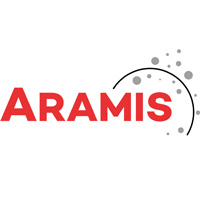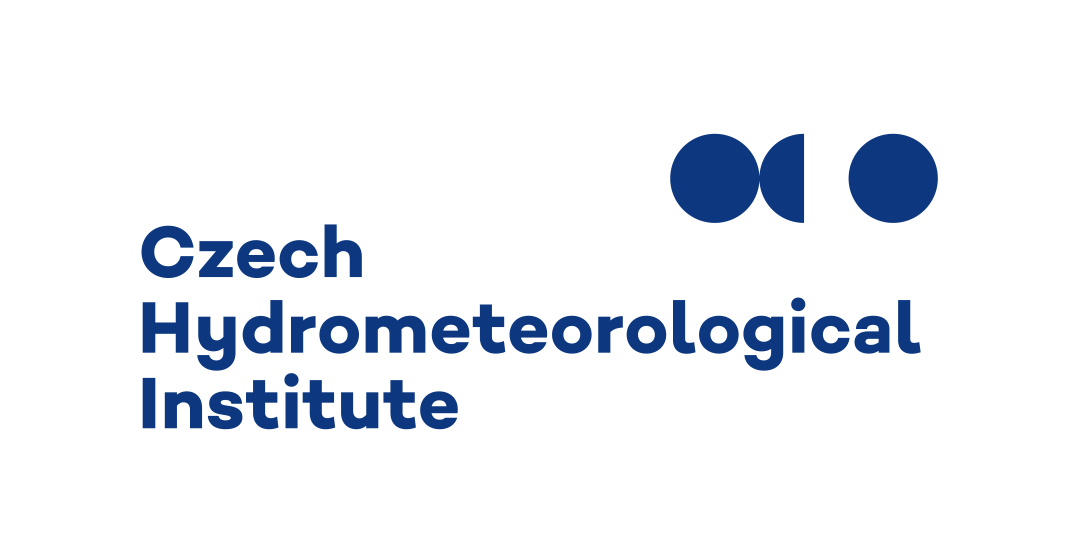


ARAMIS (Air quality Research, Assessment and Monitoring Integrated System) is a unique research center administered by the Technology Agency of the Czech Republic as part of the Applied research, experimental development and innovation in the field of environment program. This center unites key experts from various state-owned organizations from the Ministry of the Environment dealing with environmental issues, universities and the Czech Academy for Sciences, taking advantage of state-of-the-art technologies and infrastructure.
The project primarily concentrates on development, update and creation of tools, methodologies and processes for the assessment of air quality. It also deals with emissions of standard pollutants, as well as greenhouse gases including their projections and quantification of impacts on health of the public and ecosystems, energy consumption, economy and other aspects of living. The aim of the project is to contribute towards improvement of the environment, especially air quality in the Czech Republic, by implementation of the project results.
End user of the project results is the Ministry of the Environment.
Detailed descriptionAim of the project is to develop a methodology for air quality monitoring, identification of air pollution sources and their contribution to the air pollutant concentrations, focusing on current problematic issues in the field of air quality and also pollution types that are difficult to identify.
Based on the above aims, model tools will be developed to assess dispersion of air pollutants with respect to the current concentrations, as well as future development of technologies. The research activities also include development of laboratory methods for monitoring and assessment of air quality, both manual and automated. Such as methods of isotope analysis of elements in aerosol samples, particle analysis by a scanning electron microscope, determination of sugars and ions by ion chromatography, or automated determination of ammonium and gaseous mercury in air.
Also the impacts of ultrafine particles on health of the public at selected locations will be assessed, taking into account other factors such as the meteorological conditions. The project will also try to determine the role of fog and rime in total atmospheric deposition. An interesting outcome of the project will also be maps of phytotoxic doses of ozone for various plant species. Most of the project research activities will also include assessment of traffic on public health, as well as the amount of pollutant and greenhouse gases emissions. One of the key tasks of the project is also development of methodologies and emission factors used in the preparation of emission balances, especially as a follow-up to the reporting and requirements of the EU and requirements set by international commitments (the LRTAP convention and the associated protocols). The research in the field of greenhouse gases also includes analysis of biomass potential and prediction of future trends in emissions and quantification of impacts of political decisions that aim to reduce emissions, compliance with emission limits of energy consumption, economy and other indicators using macro economical models and optimization model of the energy system. Last but not least, data standards for information about sources, emissions and ambient air quality will be developed. These will then form the basis for subsequent development of complex air quality information system.
The project will also include assessment of the ambient air quality station network resulting in a proposal for modernization of this air quality monitoring network.
The project is planned for six and half years, i.e. until Dec 31, 2026.

|
Research of sources and causes of air pollution focusing on reducing uncertainties of emission inventories |

|
Improving the efficiency and targeting of strategic documents in the field of air quality and climate |

|
Quantification of air pollution and climate change impacts on health and impacts on finances and socioeconomic factors |

|
Development of tools for air quality assessment that can be used to make desicions by the state and to inform the public |

|
Making the information from the station network more accurate and better taking into account the expected trends in air quality measurements of current as well as "new" pollutants |

|
Assessment of levels and causes of poor air quality with the aim to minimize its negative impacts on public health and ecosystems |










|
|
This objective includes:
Research activities in this field are focused on the development of emission inventories of both "standard" air pollutants, as well as greenhouse gases. Since 2019 the development of these specialized methodologies has been supported by the TK02010056 project Development of the methodologies for reporting and projections of greenhouse gas emissions and removals including projections of usual pollutants. This project will follow-up on that project after it ends.

|
|
This objective includes:
Source identification is currently most frequently performed using the CMB or PMF methods, alternatively using model calculations. CHMI has practical experience with the latter two methods, which have successfully been tested at selected locations. The methodology will be further improved and made more accurate in co-operation with the Czech Geological Survey and the Institute of Chemical Process Fundamentals. The project will build-up on the results of the TACR TITSMZP704 project.
In terms of emissions projections, it is a common practice to base the predictions on a combination of macro models, which optimize the given system. This project will therefore further research the modelling activities using optimization models, in particular the renowned TIMES model and follow-up on the ongoing research done by the Charles University (Environment Center) as part of the TA CR OMEGA programs (2014–2017), THETA TK01010119 RegSim (2018–2022), BETA TITSMZP713 RES-Transport (2018–2019) and ETA TL02000440 FOREST-ADAPT.
Models have been developed in GIS environment, which are used to model the biomass potential from forest and agricultural land. These use information about climate and soil conditions of particular areas (registered in LPIS public register).
When deriving the potential and costs we will closely co-operate with research activities by the International Energy Agency and will use the most recent analyses of technologies. We will also take into account national platforms, in particular the platform for energy saving or RVUR Sustainable energy and transport.
Impacts of key (already existing) policies and measures will be analyzed in detail, including the use of econometric models and estimates, for example the programs for air protection (Kotlíkové dotace - subsidy for new boilers) and energy saving (analysis of energy consumption prior to and after the measures).
Civil service and local administrations require tools for making decisions, which currently are not available. Every change in new projects requires update of a dispersion study by an authorized person, which is not very flexible. Aim of the project is to develop a tool, which would provide a quick overview of the impacts of the particular plans and changes. The subsequent dispersion study would then subsequently be carried out for the already preprepared alternatives.

|
|
This objective includes:
Aim of the research is a systematic development of macro-structure model tool. For quantification of macro-economical impacts models of general balance (CGE) and macro-econometric model will be used. Social impacts will be analyzed using micro-simulation model. For quantification of health impacts, a consistent set of functions exposition-response will be used in combination with analyses of direct and indirect effects, building-up on the ExternE program. Renowned foreign research teams (Cambridge Econometrics, Institut für Energiewirtschaft und Rationelle Energieanwendung of the Stuttgart University and CMCC) will also be engaged in this research.

|
|
This objective includes:
Chemical transport models (CTMs) are an important tool not just for providing information about current values and predicting future trends, but also for assessing the impacts of various emission scenarios. In the Czech Republic only open-source CTM models are being used (CAMx, CMAQ). The project will focus especially on the preparation of emission inputs (making the current inputs more accurate and completeing missing emissions and further development of the FUME emission processor), building-up on the TA04020797 project and testing of optimum usage of these tools.
Information regarding transboundary transport represents an important basis for making decisions by the civil service, but it is currently only available from the " target="_blank">EMEP reports and their detail and format are not sufficient for the purposes of strategic planning at a national level. Focus will be on transport quantification and also the comparison of the results provided by the model approach with results based on field measurements (see PMF application in main objective 2).
A significant input for air quality assessment and data interpretation are meteorological data, which, however, are often omitted during measurements. New processes will be developed and tested within this project (eg. usage of drone, thermocamera, Doppler aerosol lidar, Eddy-Covariant system, microwave radiometer or mobile meteorological poles). Processes will be developed, which should be followed during experimental measurements.
More accurate information about current (realtime) air pollution at places, where there are no measurements and forecast are dealt with within the objective 4.4. This will include testing of local statistical forecasts of pollutant concentrations, new approaches for mapping pollution and usage of new data (when analyzing remote sensing data, building-up on the SAMIRA project).
Air quality assessment in urban areas (at 1km resolution) in the Czech Republic has so far been based on the application of Gaussian models (or in combination with CTM). It is therefore problematic to pinpoint local hotspots affected by nearby housing development. Therefore, methods that use advanced microlevel models will be developed (LES, Large Eddy Simulation). The work will follow-up on the experiences gained in the projects UrbanAdapt and Urbi Pragensi.
Chemical transport models (CTM) are indispensable tools for the evaluation of actual or planned measures for emission reduction and their impact on ambient air quality on both national and reginal scales. They are also essential for air quality forecasting and retrospective air quality assessment. The CAMx model is the CTM predominantly used at CHMI and cooperating institutions. Task 4.1 focusses on the preparation of CAMx input data, optimisation of the model configuration, and output.
Development of the FUME emission pre-processor is the main area for input data preparation. The main focus is on improving computational efficiency, adding missing functionality (spatial disaggregation of emissions using surrogates, possibility to apply simple emission modifications (scenarios), vertical disaggregation of emissions, extension of output formats etc.), adding a module for wind-blown dust emissions, and updating the agricultural emissions module. On model output interpretation, the aim is to propose a methodology for evaluation of the impact of AQ measures (i.e. selection of reference meteorology, comparison of model outputs for reference state and scenario etc.). Additionally, sensitivity studies on the dependency of model outputs on different emission, meteorological and other inputs, along with internal settings, will be conducted.
The second part of task 4.1 is on dispersion studies used for source permits. An analysis of the current structure of these documents will be done. A development of a tool to perform quality checks on these studies is planned for the second half of the project.
Sub-objective 4.2 is focused on mapping the shares of territorially divided emission sectors on the total concentration of suspended particles, for both average yearly concentrations and high or peak episodes. This is crucial information needed for any proposal for effective measures for air quality improvement. The approach used is based on utilizing chemical transport models – in the first phase the PSAT module incorporated in the CAMx model. In the second half of the project we hope to test the CMAQ multiphase adjoint model, which among other things enables calculation of backward sensitivities and shares, or the SHERPA tool (Screening for High Emission Reduction Potential on Air). Results will then be compared with PMF analyses of source shares, which are included in sub-objective 2.1. The PMF method utilizes measured data of specific pollutants, chemical composition of suspended particles, and potentially other supplementary inputs such as meteorological parameters. Sensitivity studies of input meteorology (PO 4.1) and the secondary aerosol formation scheme on the resultant source share are also planned.
Meteorological data represent an important input for air quality assessment and related data interpretation, but this is frequently neglected when measuring pollution. Meteorological data is also necessary for dispersion model validation. New measurement devices and techniques will be harnessed within the project framework. These are a drone, an infrared camera, Doppler aerosol LiDAR, an eddy-covariance system, and a microwave radiometer or mobile meteorological masts. A short presentation on measurement techniques is available (under at this link). Standard operating procedures for the new devices will be set, and these should be followed during experimental measurements.
As a part of the ARAMIS project the team of experts involved in PO 4.3 will also take part in measurement campaigns (emissions of dust generated by field works or wind erosion and measured in MO 1, or measurements to determine the proportion of sources in MO 2), as well as dispersion model validation (chemical transport models in PO 4.1 and microscale models in PO 4.5).
Sub-objective 4.4 is focused on getting more accurate real-time air quality data and its producing an air quality forecast.
The methodology for creating the real-time maps of monitored pollutants routinely published on CHMI webpages will be revised and updated. The intended improvements involve inclusion of chemical transport model operational outputs and application of more advanced data interpolation methods via kriging. Furthermore, new mapping methods will be tested that could remove the disadvantages of two-step methods, particularly the loss of certain spatial information between the first and second steps, i.e. between the regression analysis and interpolation of residuals.
In the later stages of the project we also expect to research the benefits of the new generation of satellite data, mainly from the planned Sentinel-4 and Sentinel-5 European Space Agency (ESA) missions, both due to be launched in 2023. Building on the completed SAMIRA project, which showed incorporation of satellite data in the construction of air pollution maps brought a slightly improved accuracy, we plan to further explore the possibilities of utilizing the newly available satellite data, including its synergic application together with current satellite survey data.
As part of the development of air quality operational forecasting, which should serve both to better inform the public informing and as a supplementary tool for the Smog Warning and Regulatory System (SRVS), work will take place on the improvement of concentration forecasts, particularly for PM10 and O3. In the first phase possibilities for utilizing statistical methods will be explored.
Recently there has been a growing interest in detailed information on urban air quality, especially on street-level air pollution. To address this, the PALM microscale model intended for evaluation of complex air quality meteorological characteristics in congested urban areas is being developed. PALM has been used for several years at the Institute of Computer Science of the CAS, in cooperation with FMP CUNI and CHMI (past projects include UrbanAdapt and URBI PRAGENSI). There have also been several successfully completed contracts for the Institute of Planning and Development and the Department of the Environment of the City of Prague.
In sub-project 4.5 attention will focus on different ways to evaluate air quality limit compliance, especially for yearly average and nth highest short term concentrations. Methods based on a limited number of simulations will be assessed, as the computational demands of this model type precludes a full year simulation. Research focusing on the possible air quality evaluation methods, within current computing capacity, for a large city such as Prague will be carried out aimed at identifying local hotspots, primarily traffic in street canyons. Another focus will be input data automation, so as to maximize the utilization of standard data, and also PALM model output processing.
Additionally, an objective will be to recommend an appropriate tool for dispersion modelling around physical barriers; such a tool could be useful in routine dispersion studies.

|
|
This objective includes:
Standard measurements only include measurements of pollutants specified by the current legislation. The European Union currently plans to include other pollutants as well, also taking into account the stricter limits applied by the WHO. Aim of the activities of this part of the project is to develop methodologies for monitoring these other pollutants as well and optimize the station network so that it provides the best possible information regarding air quality. The work will include an analysis of low-cost systems with the aim to determine their potential use, following-up on previous analyses on this topic by CHMI. The activities will also build-up on previous projects TA CR TITSMZP704, Ultraschwarz and OdCom.

|
|
This objective includes:
Accuracy improvement of the quantification of atmospheric deposition has already been dealt with as part of the project of the Ministry of Agriculture NAZV QI112A168 (ForSoil). Atmospheric deposition quantified by the current methodology used by the CHMI is underestimated, because it does not take into account all the necessary inputs. Another output will be the assessment of long-term data series using non-linear modelling. The assessment will also include the impacts of air pollution on ecosystems (eg. Convention on Long-Range Transboundary Air Pollution) and public healths (based on WHO), where there is a significant discrepancy. Ambient air quality maps currently have relatively low resolution, insufficient for the correct description of traffic. The map construction also does not take into account temporal changes. These drawbacks should be solved by this project.
Data and information regarding air pollution sources and air quality are stored in a CHMI database. Data regarding permissions and technical conditions of operation are not available in data format. This means the data cannot be used for effective and conceptual strategic work.

|
|
The Czech Hydrometeorological Institute (CHMI) is a state-funded institution of the Ministry of the Environment. It is the central national body in the fields of air quality, hydrology, water quality, climatology and meteorology. The institute is responsible for the area of the entire Czech Republic. Apart from the headquarters in Prague there are regional offices in Brno, Ostrava, Ústí nad Labem, Hradec Králové, Plzeň and České Budějovice. The Czech Hydrometeorological Institute is a research organization within the meaning of the EU regulation 651/2014, Article 2.83.
CHMI is the main participant of the ARAMIS (Air Quality Research Assessment and Monitoring Integrated System). Expert teams of CHMI employees are involved in most of the project tasks. CHMI experts co-ordinate all the main objectives of the project, with the exception of the objective 3. Work on the project will take advantage of state-of-the-art technologies used by the institute in combination with extensive knowledge and experience of its employees in the field of processing of emission data of "classical" air pollutants as well as greenhouse gases, monitoring and assessment of air quality, modelling air pollutant transport and last but not least experience with organization of experimental measurements.

|
|
The Czech Geological Survey is a respected state organization, which creates, stores and provides unbiased expert geological information for civil service, private sector and the public. It is state-funded organization and research institute of the Ministry of the Environment, responsible for performing national geological services in the region of the Czech Republic. It is the only institute, role of which is research of geological composition for the entire region of the Czech Republic. Activities of the Czech Geological Survey are based on optimum connection between services for the society and high-end research in the field of geological sciences, natural resources, geological risks and protection of the environment. Being an internationally renowned organization it flexibly responds to the demands of long-term sustainable development of the society and in the meantime plays a significant role in the popularization of geology.
Main activities of the CGS include geological services in accordance with the Act 62/1988 (regarding geological works), regional research, geological mapping and creation of 3D geological models for the region of the Czech Republic, basic and applied research in the field of geological risks, natural raw materials, groundwater sources, protection of soil conditions and protection of the environment, gathering, storing and assessing information about geological composition of areas, natural raw materials and geological risks in the region of the Czech Republic, providing geoscientific information and expert support in making decisions of state or public interest, international co-operation and foreign development support and education in geoscientific disciplines and in the field of protection of the environment.

|
|
Czech Technical University in Prague is one of the largest and oldest technical universities in Europe. It currently consists of eight faculties with more than 18 thousand students. Apart from the actual education it is also a significant research organization at international level. In the ARAMIS project, CTU is represented by the Faculty of Electrical Engineering, which has officially been founded in 1950, but roots of which go as far back as the 1880s. The Faculty of Electrical Engineering belongs to the 10 highest-ranking research organizations in the Czech Republic based on the RVVI ranking. Research activities are quite complex and include fields such as high-voltage current electrotechnics, communication technologies, automation, informatics and computer science. Research activities are being carried out by the Department of economics, management and humanities, which has for a long time been focused on the issue of applied science in the field of energetics economy. One of long-term specializations of this department are projects dealing with the economic effectiveness of renewable sources including all system and legislation aspects with special focus on the issue of determination of biomass potential and all the associated economic aspects.
Within the ARAMIs project, the faculty is involved in the objective 2. Using all the available knowledge in the field of modelling energy potential of biomass a complex dynamic model will be created in GIS environment, which will enable modelling scenarios of biomass potential with respect to the changing climate, but also with respect to the expected changes in land use.

|
|
The Charles University is, based on the QS World University Rankings 2019, the highest-ranking university in the Czech Republic. Based on the Academic Ranking of World Universities it ranks between 76-100th place globally in the field of economy, which is the highest ranking amongst post-communist countries. Two departments of the university will be involved in the project.
Department of Atmospheric Physics at the Faculty of Mathematics and Physics of Charles University gives rise to experts in the study fields of Atmospheric physics, meteorology and climatology focusing on all degrees of study - from Baccalaureate, Masters to PhD study. It is the only university in the Czech Republic that provides complex education in the fields of meteorology and climatology including mathematic-physical description. Research and study at the department focuses on highly current topics with significant social impacts - in particular the issue of climate and climate change, modelling and weather forecasts, modelling the atmospheric chemistry and air quality, modelling turbulent flow at microlevel or research of gravitational waves and their effects on global circulation. The department has been and is involved in many foreign as well as national research projects focused on those fields.
Within the ARAMIS project, the department is involved in the objective 4, which focuses on the development of tools for assessing air quality, using long-term experience with modelling air quality and pollution transport. Within this objective, the department is the main coordinator of the development of models of air pollution, both for the purposes of national strategic planning and for the purposes of assessing the effects of placing pollution sources. The department is also involved in the assessment of regional and transboundary transport and quantification of foreign/national contribution of pollution sources on secondary aerosol particles.

|
|
The Charles University is, based on the QS World University Rankings 2019, the highest-ranking university in the Czech Republic. Based on the Academic Ranking of World Universities it ranks between 76-100th place globally in the field of economy, which is the highest ranking amongst post-communist countries. Two departments of the university will be involved in the project.
Environment Center of the Charles University - is one of university departments, founded in 1992 primarily with the aim to deal with social-scientific issues of environment protection and sustainable development through research and education. The center represents state-of-the-art research center, which has over the last 20 years been involved in dozens of international projects financed by research programs of the European Committee (eg. CECILIA2050, COACCH, ECONADAPT, EXTERNE-POL, GLOBAL-IQ, INHERT, NEEDS, PURGE, PASHMINA, VERHI) and programs and research activities of OECD (EPIC, CIRCLE, SWACHE), Eurostat, EEA or ECHA. The research department of this center involved in the ARAMIS project is the Department of environmental economy and sociology. This department focuses on research especially in the fields of quantification of externalities, impacts of regulations via macro economical models, valuing non-market environmental estates, modeling the development of energy system and determinants of environmentally significant behavior. The center employees are members of advisory groups of many international organizations such as OECD or WHO, government advisory groups and work groups (RVVI KLIMA, RVUR Energetika, Uhelná Komise).
Within the ARAMIS project, the Environment Center co-ordinates the third objective. The team is involved especially in the modelling of policies impacts on economy, energetics, environment and health, including the quantification of environmental and health externalities. Within the second objective, the center is involved in the analysis of the impacts of policies on reducing emissions, potential to reduce emissions and investing and is responsible for the projections of emissions by the TIMES model.

|
|
Institute of Chemical Process Fundamentals is a public institute within the meaning of the Act 341/2005 and one of six chemistry institutes of the Czech Academy of Sciences (CAS). It focuses on research in the fields of chemistry and novel materials and also many engineering fields. Apart from systematic basic research, the institute also focuses on applied research, often in co-operation with external subjects, including industrial plants and civil service. The Department of aerosol chemistry and physics concentrates on the study of chemical and physical properties of atmospheric aerosols and identification of their sources and source contribution. Within European and Czech projects, the department co-ordinates aerosol research at the National atmospheric observatory in Košetice, where it is responsible for measurements of number concentrations and size distribution of aerosol particles and their chemical composition, determination of number concentrations of cloud condensation nuclei, sampling of particles on a filter and impactors for the determination of detailed chemical composition of the aerosol.
Team of the department employees is involved in the second objective of the ARAMIS project - Improving air pollution source identification (novel methods, analytes, markers, PMF method, isotope fingerprints of sources, regional and transboundary transport), and the development of methods for the assessment of the efficiency of measures taken to improve the air quality and the national program for reducing emissions. Main responsibility of the department within the ARAMIS project is (i) provide consultations regarding measurements of particle size distribution of aerosol within the CHMI station network, processing and assessment of the measured data from aerosol spectrometers; (ii) consultations regarding implementation of novel analytical methods for the determination of sugars in atmospheric aerosol samples; (iii) consultations regarding the processing and assessment of online analyses focused on the chemical composition of atmospheric aerosol; and (iv) consultations regarding data processing using receptor modelling.

|
|
The Institute of Computer Science is a public research institute founded as an independent department within the Czech Academy of Sciences. Mission of the institute is to perform scientific research in the fields of computer science and contribute towards implementation of the findings. Research in the field of computer science focuses on mathematical bases of informatics, computational methods, artificial intelligence, statistical and probability modelling, complex systems and application of informatics in interdisciplinary fields. In co-operation with universities it educates PhD students and researchers.
ICS is one of the participants in the ARAMIS project, being represented by Mgr. Pavel Krč, Ph.D.; krc@cs.cas.cz.
There are two work groups involved in the project. The group of Environmental informatics is involved in the objective 4: Development of tools for air quality assessment that can be used to make decisions by the state and to inform the public. It is involved in the development of air pollution modelling and the FUME emission model, the assessment of regional and transboundary air pollution transport, focusing on the development of applications of modern modelling tools usable for such assessments. The ICP team is also involved and co-ordinates the development and application of models for the assessment of air quality in urban environments at microlevel (street level). The ICP team builds-up on a previous successful work in this field.
Contact person: RNDr. Jaroslav Resler, PhD; resler@cs.cas.cz
The other group involved in the ARAMIS project is the statistical group of ICP. This group focuses on the development of semi-parametric statistical models and methods that deal with the processing and analysis of space-time data (concentration fields of selected air pollutants and their trends) and data with special structure (concentrations of selected substances in aggregated precipitation samples and estimates of wet deposition). The group also develops a model for estimating covariant structure of concentration fields. This will then subsequently be used as a basis for estimating selected parameters (eg. minimum accuracy for concentration estimate within a field) and their subsequent optimization for the assessment of alternative scenarios in the development of the station network (based on expert specifications provided by the CHMI) based on methods of statistical spatial design.
Contact person: Ing. Marek Brabec, PhD; mbrabec@cs.cas.cz

|
|
The Silva Taroucy Research Institute for Landscape and Ornamental Gardening is a public research institute established in 2007 by the Ministry of the Environment by Act 341/2005 to perform research of all landscape and associated environmental risks, research of biodiversity and its protection, expert support in nature protection and landscape maintenance and research in the field of ornamental gardening. The institute has continually existed since 1927, when it was founded by the former Ministry of Agriculture on the former estate of the County Arnost Emanuel Silva Tarouca in Průhonice. The institute currently has several departments, covering complex research of the landscape at all levels - from ecosystems, over populations to individual organisms. Part of the research activities is carried out by a worksite in Brno.
Key research activities of the institute include biomonitoring of environment pollution, research of natural temperate forests, study of fragmentation and penetrability of landscape, research of long-term land use, study and creation of tools for preserving culture-historical values and sustainable land use in green urban areas, research of biomass as an alternative energy source, diagnostics and research of diseases and plant pests, research of novel technologies for reproduction and growth of plants including breeding new varieties and study and sustainability of gene pool of non-reproducing plants.
Within the ARAMIS project, the institute is involved in the objective 2. Using extensive expert knowledge in the field of phytoenergetics a complex dynamic model will be created in GIS environment, which will enable modelling scenarios of biomass potential with respect to the changing climate as well as the expected changes in land use.

|
|
The Energy research center has been an independent institute of the university since 2002. It is a specialized workplace dealing with R&D activities primarily in the field of energetics. One of the principals of the center is systematic development of partner relationships with other (business) organizations and carrying out research activities for the purposes of industrial practice. Part of the center is an accredited test laboratory for the measurements of heat-technical parameters, pollution emissions (including continual measurement of mercury concentrations) and assessment of operational parameters of energy technologies. The test laboratory is primarily intended to be universal and allows one to test devices that burn gaseous, liquid and solid fuels with a power up to 300 kW. All types of hot-water boilers with all types of fuels are being tested here, i.e. devices for local domestic heating, which includes for example solid-fuel stoves, various household devices, fireplace stoves and fireplace inserts. The test activities also include services in the field of research and development focusing on heat devices, where the center has many years of experience.
Within the ARAMIS project, the center is involved in the objective 1. This includes extensive measurements of combustion sources used for domestic heating. These measurements will include assessment of basic pollutants, heavy metals, polycyclic aromatic hydrocarbons and other pollutants. The measurement results will then be used to derive emission factors (EF) and compared with already available results for the purposes of updating the set of EFs for local domestic heating where solid fuels are used.